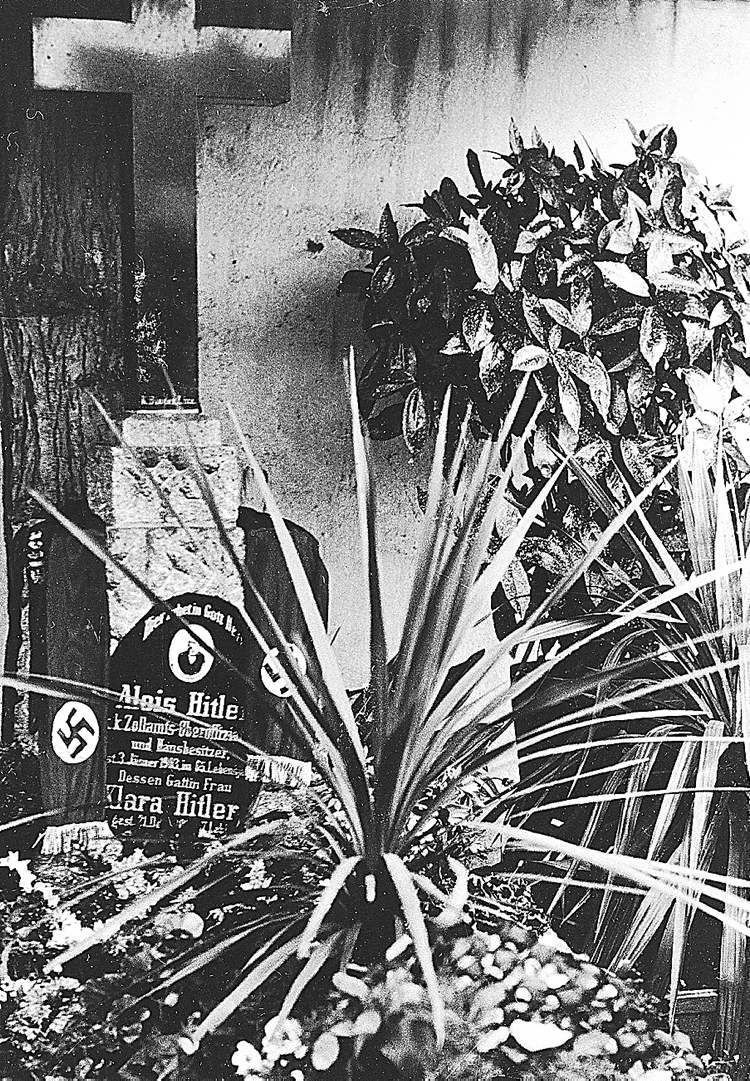Hitler’s parents’ tombstone removed from cemetery
Descendant sick of caring for it
Advertisement
Read this article for free:
or
Already have an account? Log in here »
To continue reading, please subscribe:
Monthly Digital Subscription
$0 for the first 4 weeks*
- Enjoy unlimited reading on winnipegfreepress.com
- Read the E-Edition, our digital replica newspaper
- Access News Break, our award-winning app
- Play interactive puzzles
*No charge for 4 weeks then price increases to the regular rate of $19.00 plus GST every four weeks. Offer available to new and qualified returning subscribers only. Cancel any time.
Monthly Digital Subscription
$4.75/week*
- Enjoy unlimited reading on winnipegfreepress.com
- Read the E-Edition, our digital replica newspaper
- Access News Break, our award-winning app
- Play interactive puzzles
*Billed as $19 plus GST every four weeks. Cancel any time.
To continue reading, please subscribe:
Add Free Press access to your Brandon Sun subscription for only an additional
$1 for the first 4 weeks*
*Your next subscription payment will increase by $1.00 and you will be charged $16.99 plus GST for four weeks. After four weeks, your payment will increase to $23.99 plus GST every four weeks.
Read unlimited articles for free today:
or
Already have an account? Log in here »
Hey there, time traveller!
This article was published 31/03/2012 (4976 days ago), so information in it may no longer be current.
VIENNA, Austria — The tombstone marking the grave of Adolf Hitler’s parents, a place of pilgrimage for neo-Nazis, has been removed from an upper Austrian village cemetery at the request of a descendant, and the grave is ready for a new burial, officials said Friday.
Walter Brunner, mayor of Leonding village, said the stone with the faded black-and-white portrait photos of Alois and Klara Hitler was taken down Wednesday. Village priest Kurt Pitterschatscher said the rented grave was available for a new lease.
Austrian graves are usually leased for periods of 10 years. The lease is renewable and can be willed to friends or relatives.

Pitterschatscher said the stone and black marble marker, topped by a granite cross, was removed without ceremony by a stonemason hired by the relative, described as an elderly female descendant of Alois Hitler’s first wife, Anna. What’s left at the site is a white gravel square and a tree.
He said he did not know the woman personally and did not identify her by name but cited her request for termination of the grave lease as saying she was too old to care for it and tired of it “being used for manifestations of sympathy” for Hitler.
Hitler’s roots are in Braunau, near Leonding, which is commonly identified as his hometown after the village that he was born in was incorporated into Braunau in 1938. But he and his family moved to Leonding in 1898 when he was nine and lived there until Hitler was 15.
Leonding itself first assumed cult status for his followers after Hitler visited his parents’ grave and the nearby family house following the 1938 annexation of Austria by Nazi Germany.
The family’s Leonding house now warehouses coffins for the cemetery, and Brunner said in a telephone interview that — unlike the more than 100-year-old grave — it did not draw Hitler fans.
Anti-extremist groups say neo-Nazis, sometimes coming in groups, placed flowers and Nazi symbols on the grave.
Robert Eiter, with the Upper Austrian Network Against Racism and Right-Extremism, said the latest incident was on All Saints Day, Nov. 1, when an urn was left with the inscription “UnvergeSSlich” — German for “unforgettable” and alluding to Hitler’s SS shock troops.
“A lot of flowers and wreaths were deposited there from people who clearly were admirers,” he said. “It had to do with the son and not the parents.”
Brunner, the mayor, said he was “happy with the decision,” to remove the tombstone and Eiter said most Leonding residents also supported it.
Hitler himself committed suicide in his Berlin bunker in 1945. Attempts to burn his body were only partially successful, and his remains were recovered by the Soviets. The find was kept secret, allowing Stalin to perpetuate a Cold War myth that Hitler survived and was hidden in the West.
Hitler’s jaws and skull were later rediscovered in secret archives in Moscow and went on display in Russia’s Federal Archives Service in 2000. The rest of him turned out to have been buried beneath a Soviet army parade ground in the former East German city of Magdeburg.
His remains were exhumed in the 1970s and incinerated. The ashes were flushed into the city’s sewage system.
— The Associated Press

